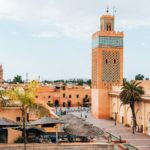Córdoba is a city which lies in the southern Spanish region of Andalusia. The city has distinct Roman influence and was founded due to being the highest navigable point of the Guadalquivir River. The Muslim influence is also unmisatakable, Cordoba is well known for La Mezquita, its monumental mosque. It is definitely a peaceful holiday destination to uncover, explore the city which is rich in art and history.
Get the most out of your upcoming trip with these 17 things to do…
MUST-DO
Visit La Mezquita
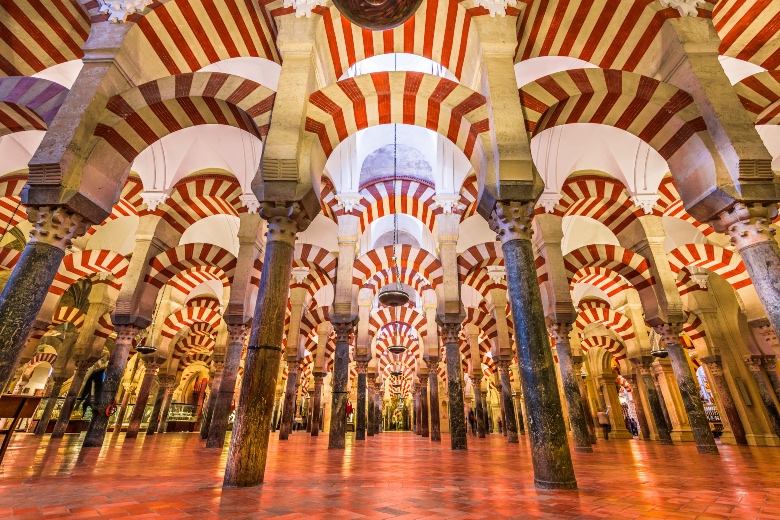
La Mezquita is the Mosque (turned Cathedral) in Cordoba which was built in 785. It is one of the world’s greatest works of Islamic architecture. The mosque was then converted to a Christian cathedral in the 13th century. It is spectacular in structure with 850 columns in total, you will be in complete awe as you wander through it. Although it is always full with tourists, you will be sure to feel the serenity bursting through the interior of the cathedral. The city’s greatest monument can be found at the heart of Cordoba’s historic centre.
Note: Don’t forget to climb up to the 54 meters high bell tower (Torre Campanario) for amazing views across the city.
Alcázar de los Reyes Cristianos
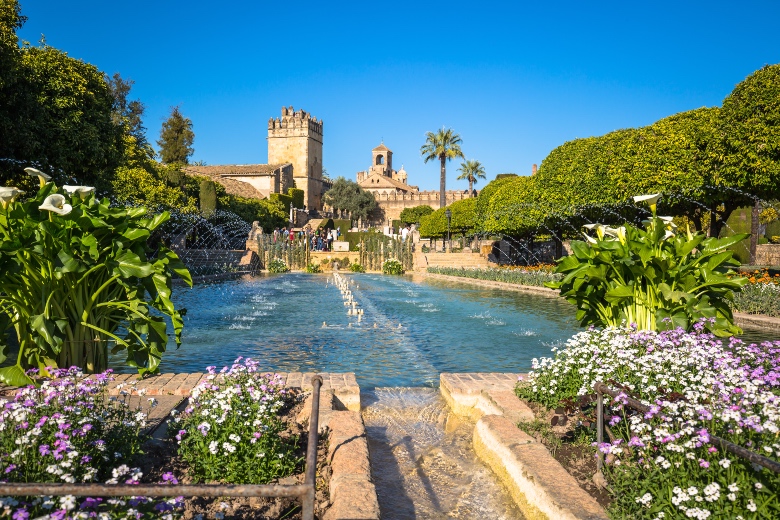
The Alcazar of de los Reyes Cristianos, also known as the Alcazar of Cordoba is another monument located in the historic centre of Córdoba. The palace was built in the 1300s as a fortress, it then served as one of the primary residences of Isabella I of Castile and Ferdinand II of Aragon. The fortress houses many remarkable ancient artifacts, so whilst you admire the beauty around you, try to pick up a fact or two about Cordoba’s history.
Moorish horticulture is particularly evident in the backyard gardens. Tourists are attracted to the gorgeous fountains, and perfectly-cut hedges. Take a stroll around and digest the tranquility of it all.
El Puente Romano
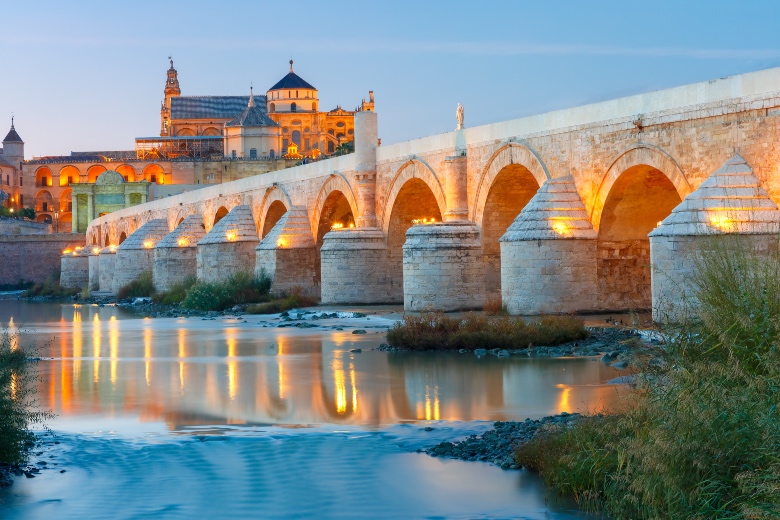
The Roman bridge of Córdoba is certainly a sight to behold. Although the bridge was originally built in the early 1st century BC, it has since been reconstructed at various times. Located in Cordoba’s historic centre, you can walk over the bridge in either direction. The bridge stands over the Guadalquivir river, and provides stunning views of Cordoba. It is truly an object of beauty, especially at dusk when the arches are highlighted by the sun.
The bridge is not only a popular monument, but also a famous set for a tv show. The Roman Bridge was featured in Season 5 of Game of Thrones, so make sure you come and get a picture and leave Cordoba with something to brag about.
Calahorra Tower
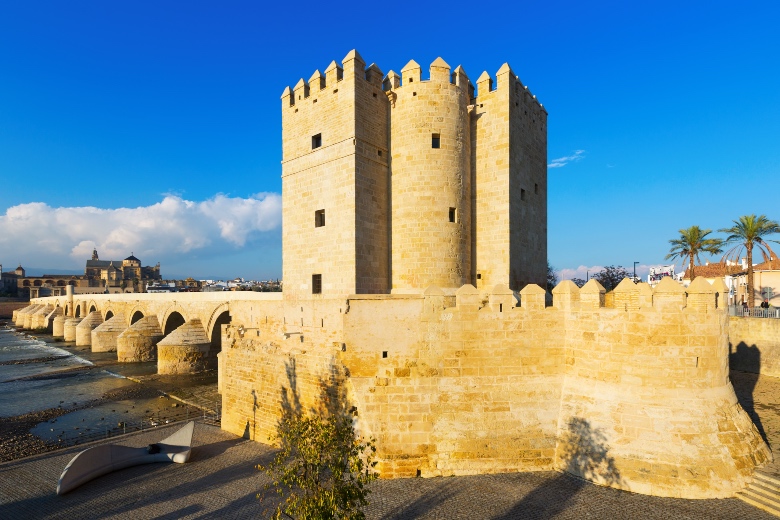
Calahorra Tower is situated south of the end of the Roman Bridge. Originally built in the early-13th century, the tower underwent reinforcements in the 14th-century by Henry II of Trastámara. Calahorra Tower stands at 15 metres high. The Latin cross plan comprises 8 rooms and houses the Museo Vivo de Al-Andaluz. The permanent collection features panels and audiovisual presentations which explore the three religions that existed side by side in medieval Córdoba – Judaism, Christianity and Islam. You can also view interesting models of the Mosque of Cordoba and the Alhambra in Granada.
Climb to the roof terrace which is accessed by a small spiral staircase, and view the city from spectacular heights.
Explore the Jewish Quarter (Juderia)
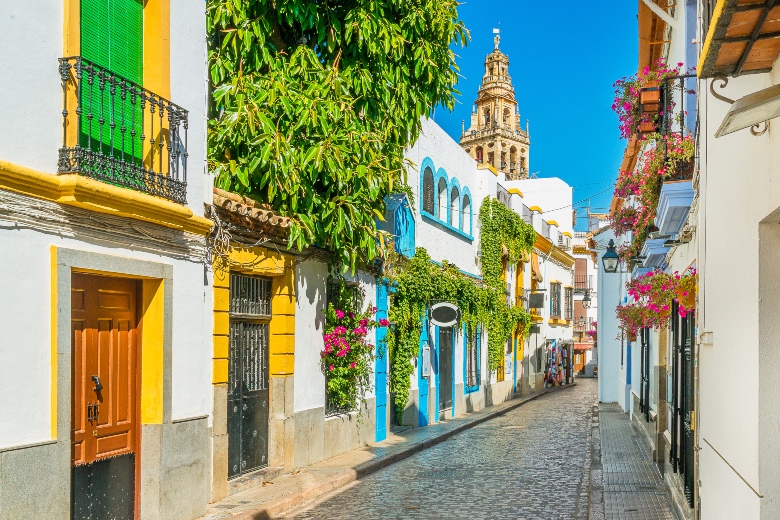
The Jewish quarter of Cordoba is also known as Judería de Córdoba. Here you will find the only Jewish Synagogue in all of Andalusia (one of only three originals remaining in the whole of Spain). The synagogue is one of the best-preserved Medieval synagogues and is situated at the heart of the Jewish quarter. There is also a statue of the famous Jewish Philosopher Maimónides near the synagogue. The neighbourhood is picturesque with narrow lanes and cobblestoned corners. Wander through the beautiful streets and visit some authentic cordovan restaurants.
Tip: Choose to wander on your own, or book a guided tour.
OTHER GREAT THINGS TO DO
Medina Azahara
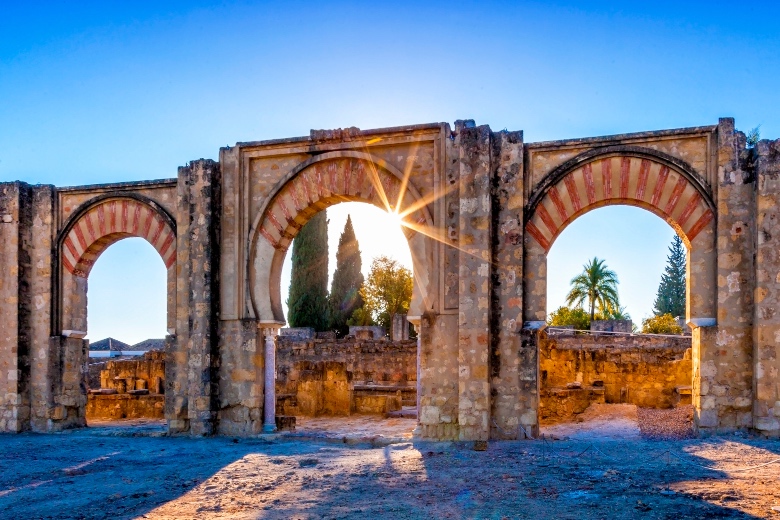
Medina Azahara is located about 5 miles west of Cordoba. The intriguing Caliphate city was built by Abd-ar-Rahman III in the 10h century but only stood 65 years. Forgotten until 1911, Medina Azahara was rediscovered and has only been minimally excavated. Visit the Caliph’s palace and learn more about the beautiful city at the museum. Uncover ancient ruins, and explore the city’s newest UNESCO World Heritage Site.
Archaeological Museum
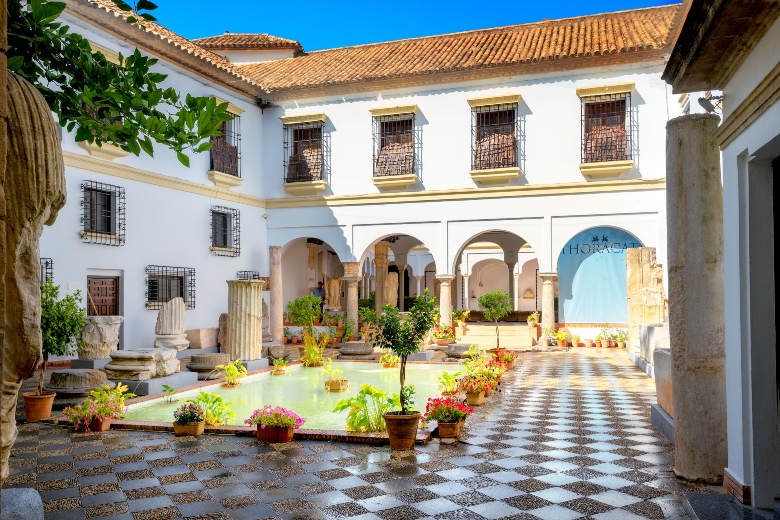
The Archaeological Museum of Cordoba is a fitting place to bask in the history of Cordoba. Here you will find an extensive display of the archaeological remains found in Cordoba from prehistoric times up until the period of Arabic rule (known as Al-Andalus). The building in which the museum is now housed was the former palace of the Páez de Castillejo. The museum is located in a beautiful square in the historic centre of Cordoba and is divided into three levels.
Cordoba’s archaeological museum is one of the most complete archaeological museums in Spain, it is easy to navigate and definitely an interesting place to add to your must-see list.
Patios de Córdoba
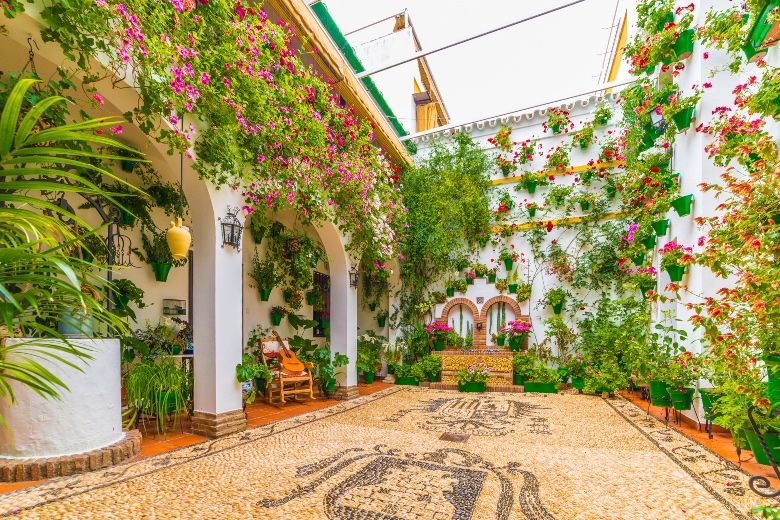
Córdoba comes alive in May at Patios de Córdoba. The Patio Festival is a tradition that began in 1918, in order for hidden treasures to be made available to the public. The people of Cordoba celebrate the annual Courtyard Festival which is also a contest. Codovoans open the courtyards of their homes to the public, who then view courtyards that are packed with trees, flowers and fountains. The competition is taken very seriously, and the best courtyard wins!
You can explore 50 or more courtyards with patios that are beautifully decorated with colourful flower arrangements and mosaics. Bonus: they are free to visit!
Aquasierra
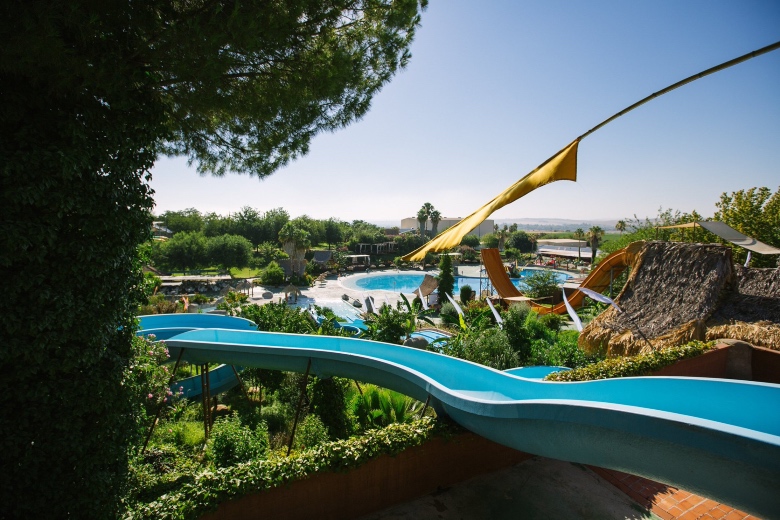
Aquasierra is located about a 15 minute drive East of Cordoba, and it is the only waterpark that you will find here. Open from June to September, Aquasierra sees a high number of tourists each year. The waterpark features about ten acres of water surface and includes spacious sunbathing and relaxing areas. It is very modern with a number of waterslides and watersport activities to indulge in. For those with kids, there is a smaller pool (aside from the two large ones), which can be utilised.
This will definitely be a fun activity to do, and if you do get tired, there are many places to eat, drink and relax!
The Royal Stables of Cordoba
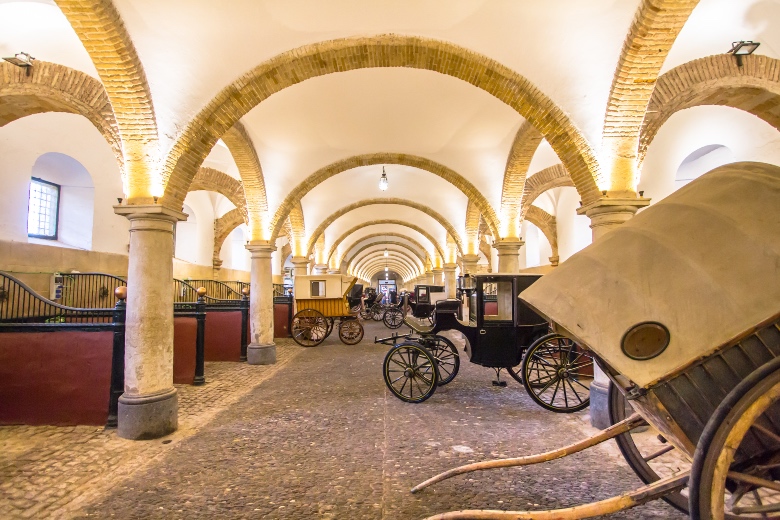
The Royal Stables of Cordoba are a group of stables built in 1570 by decree of King Philip II. The stables are known as las caballerizas reales in Spanish. The building is rectangular with various spacious and vaulted rooms. The rooms house many pure-bred Andalusian horses. Visit the stables to look around the beautiful building which features a central courtyard, the main stable, the riding arena, the Torreón de la Muralla and lovely gardens.
You can also catch the “Passion and Spirit of the Andalusian Horse” Equestrian Show at the Royal stables,the whole family will love it!
Feria de Córdoba
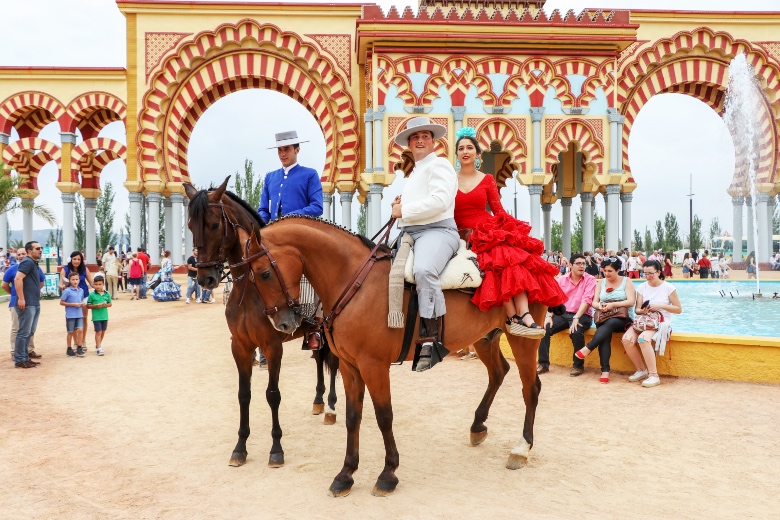
Feria de Córdoba is Cordoba’s annual spring fair. It is the largest and most important one held annually in an amusement park Cordoba. It takes place at the end of May (typically the last week). Throughout the fair, the streets are filled with horse-drawn carriages, “Sevillana” music, taps in abundance and flamenco dresses and dancing. The fast-paced atmosphere is one to lose yourself in, chat with the locals, meet new people and try some authentic rebujito (a cocktail). The cocktail mixes sherry (Manzanilla or Fino) and soft drinks.
Make sure to catch the fair, where you will learn the most basic steps to the sevillana, and explore even more of the Andalusian culture.
Mercado Victoria
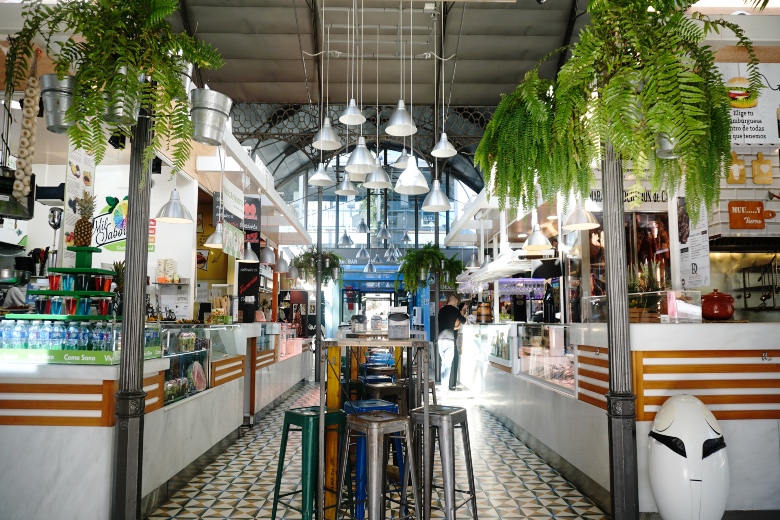
Mercado Victoria is the place to go after a long day of exploring. As the first gourmet market in Cordoba, there is much to discover. Wander through the 30 stalls which sell hundreds of culinary delights. Try some authentic Cordovan delicacies such as salmorejo or flamenquín. There are international options also for those less willing to explore, options such as sushi, American burgers and Argentinian empanadas.
The atmosphere is electric, here you will find many eager tourists and a promise of a good time.
Relax at a Hammam
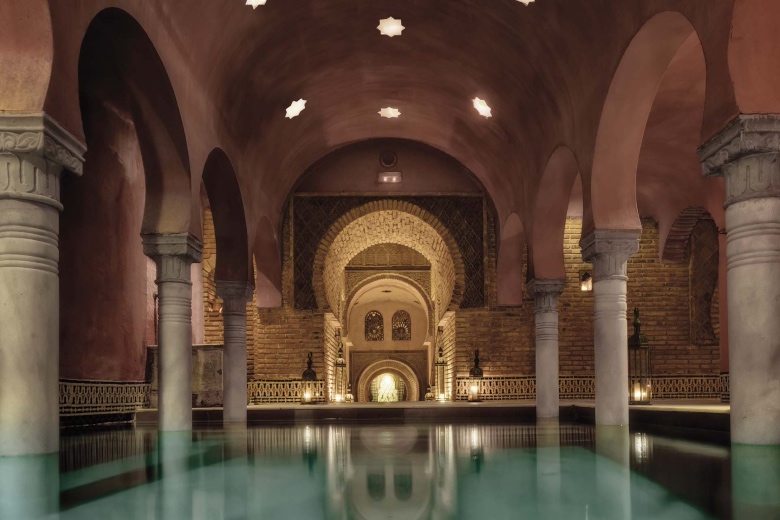
Hammam’s are notorious for their relaxation properties. The traditional, Arabian-style bath is a must-go after days of trekking through Cordoba’s streets. You will find the Hammam building a few metres from the Mosque, as you enter it bask in the splendid arabesque architecture. You can opt for a bath or massage, or both! Either way you will encounter a new level of serenity.
The whole experience is so relaxing and peaceful that you’ve got to make sure you don’t doze off!
Roman Temple
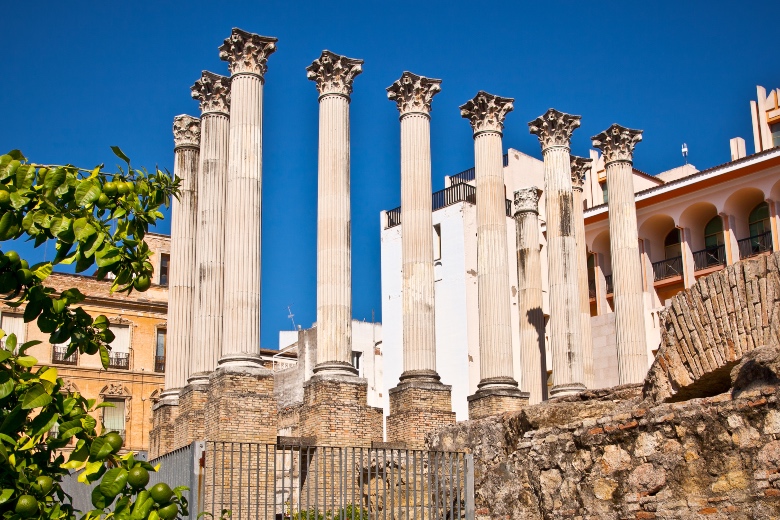
The Roman Temple of Cordoba will leave you in awe! Situated next to the town hall, the temple impresses the masses with its dimensions. As it is only the remains of the temple that once was, your visit here will not be long. Still, the breathtaking columns are enough to make you stop and stare. There are 10 columns in total which are all 32 meters long, the temple is also surrounded by a sheet of glass, which allow you to feeling like you are inside the building,
Some original fragments of the temple, such as parts of drums or capitals, can still be seen. Other remains however were taken to the Archaeological and Ethnological Museum of Córdoba in order to be preserved better.
Almodovar Gate
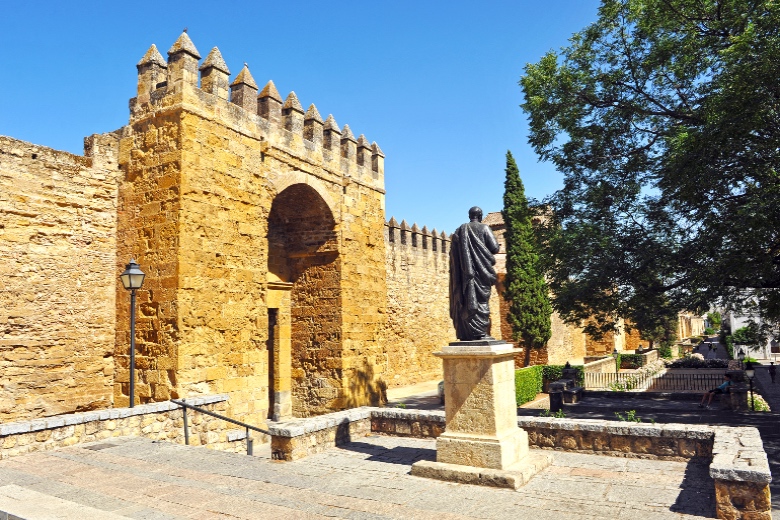
Almadovar Gate is Cordoba’s best-preserved Moorish city gate. Of all the seven gates from Roman times, only the Almodovar stands today, hence it is very valuable to the city of Cordoba. Built in the 14th century, it is located in Cordoba’s old town and leads to La Juderia. The horseshoe arch shape is made with sandstone blocks, and connects two towers together. Along the wall of the gate, you will find an enchanting walkway which connects the Almodóvar Gate with the Arch of the Moon.
The sculpture of the philosopher and playwright Lucio Anneo Seneca can also be found in the square preluding to the entrance of the gate.
Museo Taurino
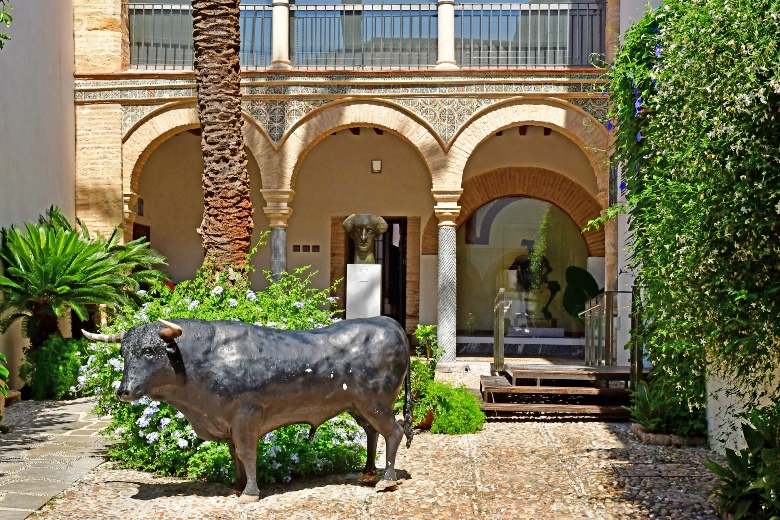
Bullfighting is a tradition that goes back centuries in Cordoba. Bullfighting is an integral part of the history of Andalusia in general. Cordoba is imbued with the nature of bullfighting and Museo Taurino is a testament to this. The museum, which is located in Casa de la Bulas, is dedicated to bullfighting and features photos, instruments of fight and even comprehensive information on the bull. Learn about the art of bullfighting and view many personal items of famous bullfighters.
Whilst in Cordoba, you can also visit a monument of Bullfighting’s most famous matador, Manolete (1917-1947). This is located in Plaza del Conde de Priego in the old town.
Calleja de las Flores
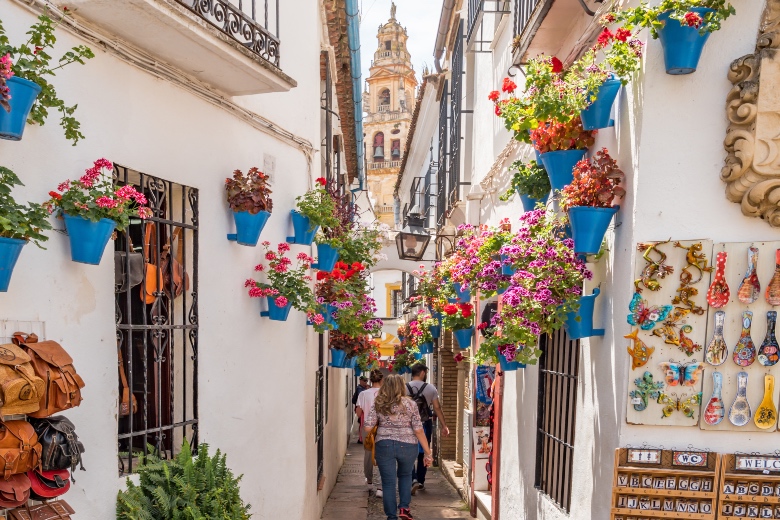
Calleja de las Flores is Cordoba’s most famous little alley located in the Juderia area. It is definitely a tourist hotspot! The English translation Alley of flowers is certainly fitting as you will find some of the most beautiful flowers here. The best time to go is late in spring when the geranium flowers have fully blossomed and are hanging down on the walls. If you continue down the alley, you will be greeted with an amazing view of La Mezquita.
Gape at the whitewashed walls and flowery balconies as you stroll down the street – it is a picturesque dream.


